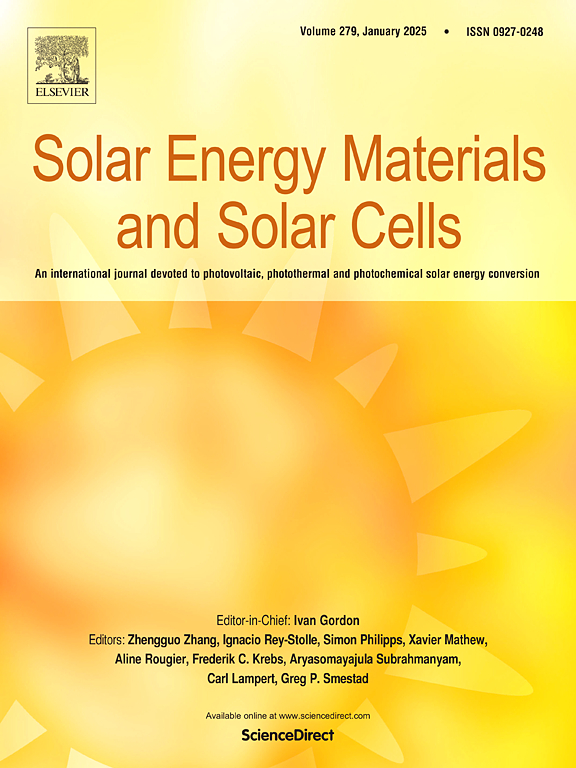Agricultural byproduct/reduced graphene oxide sustainable nanocomposite aerogels as solar evaporation active materials
IF 6.3
2区 材料科学
Q2 ENERGY & FUELS
引用次数: 0
Abstract
Improving the sustainability of solar evaporation materials can provide new eco-friendly solutions to the growing challenge of clean water availability. This study introduces a new class of sustainable antibiofouling nanocomposite aerogels by incorporating wheat straw (WS), one of the most common agricultural byproducts, into reduced graphene oxide (rGO) aerogels. The WS particles are used without any pre- or post-treatment, eliminating the need for unsafe and costly treatment methods typically required for sustainable aerogel production. Additionally, since WS is inexpensive, this sustainable additive lowers the production costs of rGO-based aerogels when used as a filler. Morphological, textural, and microstructural analyses confirm that the amount of WS added affects both the evaporation interfacial area and the structural properties of the sustainable aerogels. The specific surface areas of rGO-based aerogels with 0.7, 2.2, and 12.5 vol percentages of WS were 147.8 % higher, 23.2 % higher, and 13.2 % lower than the neat rGO aerogel, respectively. This variation in microstructure resulted in the solar evaporation efficiency of these nanocomposite aerogels being 16.1 %, 9.2 %, and 1.2 % higher than that of the neat rGO aerogel, respectively. Moreover, the estimated material costs of these sustainable aerogels were 0.7 %, 2.2 %, and 12.6 % lower than those of the neat rGO aerogel, respectively. Additionally, antibiofouling studies against Nitzschia demonstrated that incorporating WS into the rGO aerogel structure can improve microorganism growth inhibition by more than 10 %. Therefore, the integration of WS into the 3D rGO framework enables the development of cost-effective photothermal active materials for solar evaporation applications.

求助全文
约1分钟内获得全文
求助全文
来源期刊

Solar Energy Materials and Solar Cells
工程技术-材料科学:综合
CiteScore
12.60
自引率
11.60%
发文量
513
审稿时长
47 days
期刊介绍:
Solar Energy Materials & Solar Cells is intended as a vehicle for the dissemination of research results on materials science and technology related to photovoltaic, photothermal and photoelectrochemical solar energy conversion. Materials science is taken in the broadest possible sense and encompasses physics, chemistry, optics, materials fabrication and analysis for all types of materials.
 求助内容:
求助内容: 应助结果提醒方式:
应助结果提醒方式:


